PRESS
|
: -1 : SAIGON BEAUTY SHOW : Fri, 8 May 2020, 2:28 PM |
| [GlobeNewswire] Asia Pacific Halal Cosmetics Market is poised to reach US$ 4.8 Bn by end of 2027, Says CMI |
|---|
|
Asia Pacific Halal Cosmetics Market is poised to reach US$ 4.8 Bn by end of 2027, Says CMI | Source: CMI
SEATTLE, April 17, 2020 (GLOBE NEWSWIRE) -- Halal cosmetics are body and skin care products free from materials that are forbidden by the Islamic society. Asia-Pacific halal cosmetics market is estimated to account for US$ 4.8 Bn in terms of value by the end of 2027 Asia Pacific Halal Cosmetics Market: Drivers High presence of the Muslim population in Asia Pacific is expected to propel growth of Asia Pacific halal cosmetics market over the forecast period. For instance, according to Pew Research Center, the number of Muslims in the Asia Pacific is projected to increase from about 1 billion in 2010 to about 1.3 billion in 2030. Increasing presence of halal-certified manufacturers is also expected to aid in growth of the market. For instance, Indochine Natural Sdn Bhd, a Malaysia-based artisan offers halal-certified all-natural skin and hair care products. Request for Sample PDF copy @ https://www.coherentmarketinsights.com/insight/request-sample/3690 Asia Pacific Halal Cosmetics Market: Opportunities Increasing preference for high quality and ethical products from non-Muslim consumers is expected to offer lucrative growth opportunities for players in Asia Pacific halal cosmetics market. Moreover, increasing concerns over use of animal-derived ingredients such as collagen and gelatin in cosmetics products is also expected to aid in growth of the market. Asia Pacific Halal Cosmetics Market: Restraints Absence of standard regulatory scenario across economies in Asia Pacific is expected to limit growth of the market. Moreover, presence of counterfeit products that claim to be halal certified is also expected to hinder the market growth. Key Takeaways: On the basis of type, color cosmetics dominated the Asia Pacific halal cosmetics market in 2019 with around 37.9% of market share in terms of revenue, followed by skin care, hair care and fragrances respectively. The growth of the color cosmetics segment is owing to the rising disposable income of the population. According to Coherent Market Insights’ analysis, the global color cosmetics market was valued at US$ 62.36 billion and is expected to reach US$ 90.16 billion by 2025, witnessing a CAGR of 4.22% over the forecast period (2017 - 2025). On the basis of sub-regions, Southeast Asia dominated the Asia Pacific halal cosmetics market in 2019 with around 61.8% of market share in terms of revenue, followed by South Asia, East Asia and Oceania respectively. The demand for halal cosmetics is increasing in Southeast Asia owing to the increasing awareness about the use of good quality products and rising government regulations for the development of new halal cosmetic products. Read Report Summary @ https://www.coherentmarketinsights.com/market-insight/asia-pacific-halal-cosmetic-market-3690 Market Trends/Key Takeaways Major players in the market are focused on adopting online distribution channels to enhance their market share. This is attributed to increasing adoption of smartphones and rapid growth of the e-commerce sector. For instance, according to India Brand Equity Foundation, the e-commerce sector in India is expected to reach US$ 200 billion by 2026 from US$ 38.5 billion as of 2017. The demand for halal products in India has witnessed an upward spiral. This is owing to high presence of Muslim population in the country. For instance, according to Pew Research Center, Muslim population in India is expected to reach 311 million in 2050. Regulations In October 2019, Indonesia's Halal Product Law (“Halal Law”) came into effect.
Asia Pacific Halal Cosmetics Market: Competitive Landscape Major players operating in Asia Pacific halal cosmetics market include, INKIA, Martha Tilaar Group, Wipro Unza, Clara International, Ivy Beauty Corporation, Sdn Bhd Overview, Paragon Technology & Innovation, and Brataco Group of Companies Buy this Research Report @ https://www.coherentmarketinsights.com/insight/buy-now/3690 Asia Pacific Halal Cosmetics Market: Key Developments Major players in the market are focused on adopting partnership strategies to expand their product portfolio. For instance, in April 2020, SAFI, a producer of halal skincare products, partnered with Tealive, a Malaysia-based bubble tea chain, under which the launch of four facial cleansers will be witnessed. Taxonomy (Scope, segments) By Type
Lip Care
By Region
|
| Back to list |





 02-0000-0000
02-0000-0000 02-0000-0000
02-0000-0000 0ddd@dddd.com
0ddd@dddd.com

